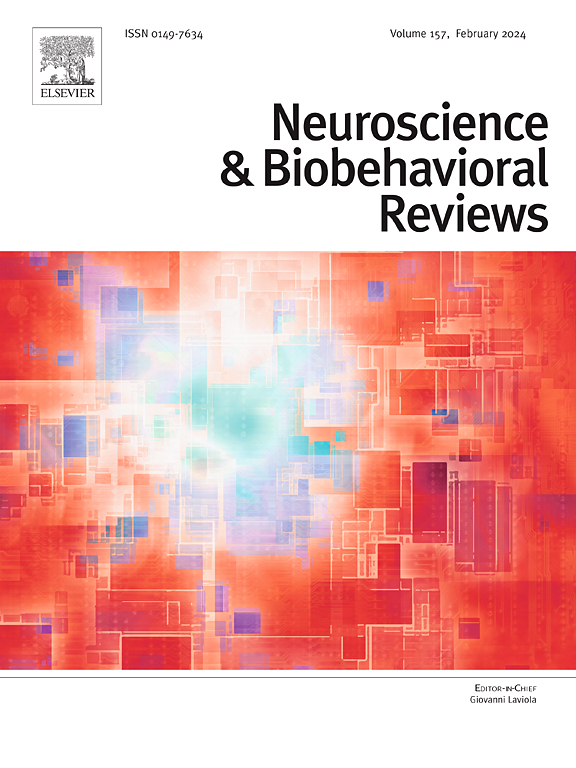情绪感知中多感官整合的脑成像研究:范围综述》。
IF 7.5
1区 医学
Q1 BEHAVIORAL SCIENCES
引用次数: 0
摘要
情绪在人类日常活动中是必不可少的,但准确地感知它们是一项复杂的任务。来自多种感觉方式的情感线索需要有效地整合以形成整体感知。这个过程被称为情绪多感觉整合(eMSI),涉及到多个大脑区域的招募,并已被证明可以增强情绪感知。目前的范围审查提供了一个最新的和详尽的概述当前的文献脑区域潜在的eMSI。总共有12项相关研究被确定纳入四个学术数据库。大多数纳入的研究采用视听范式,检查快乐和愤怒情绪线索的整合,并利用功能性磁共振成像来识别参与eMSI的大脑区域。研究结果表明,多感觉脑区(如丘脑、后颞上沟/回)和情绪整合脑区(如梭状回、内侧颞回)相互作用增强eMSI,从而提高情绪检测能力。由于缺乏多样化的人群、感觉组合和调查的情绪,以及在纳入的研究中发现的方法问题,还需要进行额外的研究。未来的研究应旨在扩大其重点,以解决这些未开发的领域,从而促进我们对eMSI的理解。本文章由计算机程序翻译,如有差异,请以英文原文为准。
Brain imaging studies of multisensory integration in emotion perception: A scoping review
Emotions are essential in everyday human functioning, yet accurately perceiving them is a complex task. Emotional cues originating from multiple sensory modalities need to be efficiently integrated to form holistic percepts. This process, known as emotional multisensory integration (eMSI), involves the recruitment of multiple brain regions and has been shown to enhance emotion perception. The present scoping review provides an updated and exhaustive overview of the current literature on brain regions underlying eMSI. In total, 12 relevant studies were identified for inclusion across four academic databases. Most included studies employed audio-visual paradigms, examined the integration of happy and angry emotional cues, and utilized functional magnetic resonance imaging to identify brain regions involved in eMSI. Findings support that brain regions underlying both multisensory (e.g., thalamus, posterior superior temporal sulcus/gyrus) and emotional integration (e.g., fusiform gyrus, medial temporal gyrus) interact to enhance eMSI, leading to improved emotion detection. A need for additional research was also identified due to a lack of diverse populations, sensory combinations, and emotions investigated, as well as methodological issues identified across included studies. Future research should aim to expand its focus to address these underexplored areas, thereby advancing our understanding of eMSI.
求助全文
通过发布文献求助,成功后即可免费获取论文全文。
去求助
来源期刊
CiteScore
14.20
自引率
3.70%
发文量
466
审稿时长
6 months
期刊介绍:
The official journal of the International Behavioral Neuroscience Society publishes original and significant review articles that explore the intersection between neuroscience and the study of psychological processes and behavior. The journal also welcomes articles that primarily focus on psychological processes and behavior, as long as they have relevance to one or more areas of neuroscience.

 求助内容:
求助内容: 应助结果提醒方式:
应助结果提醒方式:


